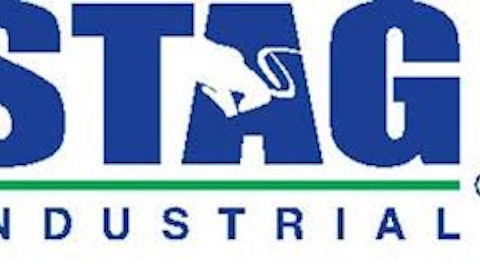The company maintains investment grade credit ratings from all three major agencies and has no major long-term debt maturities until 2024. Omega also has $1.1 billion of cash and credit facility availability that it can tap at any time, and the company’s debt ratios are generally more conservative than its peers:

Source: Omega Investor Presentation
What about the payout ratio? Analyzing payout ratios requires a different perspective for REITs because they book large depreciation charges each year for their properties, reducing their reported earnings.
However, the value of real estate typically rises over time. For this reason and others, REITs report non-GAAP measures that better represent their cash flow and dividend coverage. One of these measures is adjusted funds from operation (AFFO), which is similar to free cash flow but for REITs.
Omega’s dividend payout ratio using AFFO is 71%, which is quite reasonable for a business with consistent and stable free cash flow.
Even during 2009, Omega’s occupancy rate was very healthy at 84.6%. The company’s payout ratio should also be protected thanks to Omega’s favorable lease renewal schedule – about 89% of portfolio expirations occur after 2020.
Overall, Omega’s dividend looks safe to us. While we don’t like being exposed to the uncertainties of healthcare reform, we believe the changes being made today are far from the devastating events of the late 1990s.
Omega’s diversification, financially healthy tenants, reasonable payout ratio, and relatively conservative financial position give us further confidence in the safety of its dividend.
Dividend Growth Score
Our Growth Score answers the question, “How fast is the dividend likely to grow?” It considers many of the same fundamental factors as the Safety Score but places more weight on growth-centric metrics like sales and earnings growth and payout ratios. Scores of 50 are average, 75 or higher is very good, and 25 or lower is considered weak.
Omega Healthcare Investors Inc (NYSE:OHI)’s Dividend Growth Score of 48 suggests that the company’s dividend growth potential is about average. The company’s score was mostly pulled down by Omega’s high payout ratio, which is typical of REITs but makes their dividend growth much more dependent on cash flow growth.
Regardless, Omega has raised its dividend for 14 consecutive quarters and increased its dividend payment every year since 2003. As seen below, Omega has consistently grown its dividend at a high-single digit rate over the last decade.

Source: Simply Safe Dividends
As long as the regulatory environment remains stable and capital is accessible to fund growth, we expect at least mid-single digit dividend growth to continue.
Valuation
OHI’s stock trades at a reasonable multiple of about 11x funds from operations (FFO) and has a dividend yield of 6.5%, which is approximately in line with its five-year average dividend yield.
Thanks to its acquisitions, Omega compounded its adjusted EBITDA by 21.6% per year from 2005 through 2015. Growth was significantly boosted by the company’s $3.9 billion acquisition of Aviv in 2015 and is unlikely to remain at such a high rate.
Going forward, we think Omega’s cash flow can continue growing at a mid- to high-single digit rate given the number of acquisitive growth opportunities in its large and fragmented markets. Under this assumption, the stock appears to have double-digit annual total return potential.
Conclusion
No dividend stock is perfect, and Omega certainly contains its fair share of uncertainties thanks to its indirect dependence on Medicare and Medicaid reimbursements.
However, we believe the company’s dividend payment is safe thanks to its client diversification, conservative payout ratio, strong rent coverage metrics, and relatively healthy balance sheet.
We don’t view today’s reimbursement changes being anywhere near as dramatic as the events of the late 1990s and expect Omega to be able to power through as it continues consolidating the SNF market.
Investors looking for a combination of high yield and value might want to take a closer look at Omega and other high quality dividend stocks in our Conservative Retirees dividend portfolio.
Disclosure: None





